We’ve all heard it a million times: Wash your hands! Scrub between your fingers! Use plenty of soap! But did you know that washing your hands does a lot more than getting rid of dirt? It’s also the best tool we have to get rid of nasty viruses and keep ourselves healthy — and it’s all thanks to the chemistry of handwashing.

A virus is a teeny-tiny particle, too small to see without a microscope. There are many different kinds, and if enough of certain viruses get into our bodies, they can make us sick. For example, if you get a sniffly nose and a little bit of a cough, it might be because a virus gave you a cold. Viruses usually get in our bodies when we touch something with the virus on it, like a table someone sneezed on. The virus goes from the table to your hand to your mouth. (Ew.)

Right now, there’s a new virus people are worried about, called the novel coronavirus. Novel means new, and that’s because this is a new type of a group of viruses called coronaviruses. (They were named for their shape: corona means crown.) Although this virus doesn’t seem to be much worse than a cold for some people, it can make others very sick, and there’s no vaccine or medicine to prevent it yet. However, there is one weapon we can use to stop it from spreading: soap.
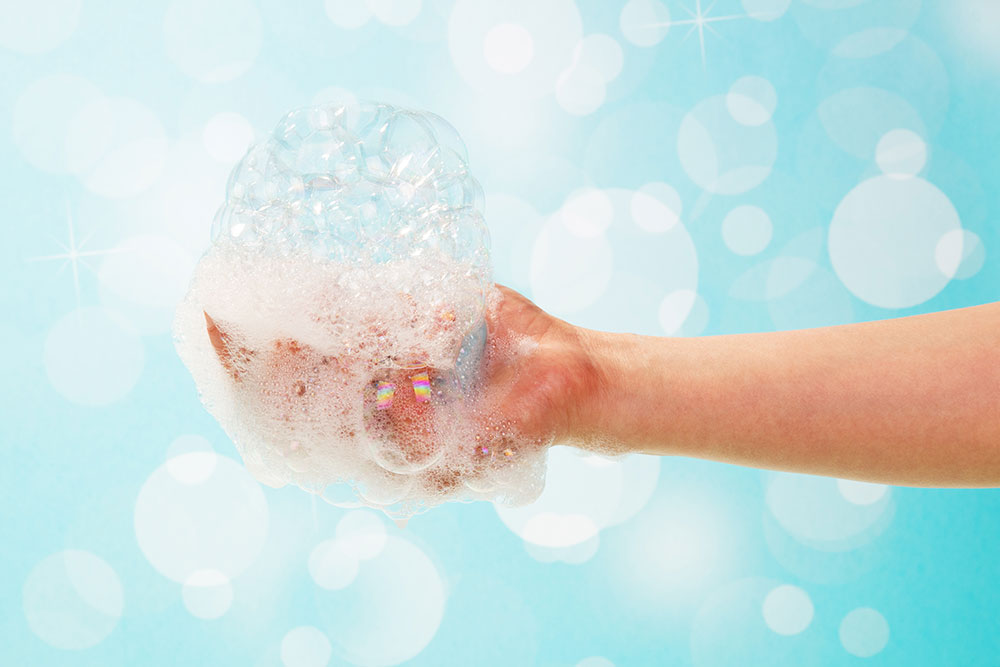
Soap means sweet-smelling suds to us, but it’s the worst thing in the world for most viruses — including the novel coronavirus. Washing with soap (plus a little water) can beat up a virus, break it into pieces, and flush it safely down the sink.
Soap has this superpower because soap molecules are super-special. You can imagine a soap molecule like a tiny connector piece with two different ends. One end is happy to mix with water, so we call that the water-loving or hydrophilic end. (Hydro means water and philic means loving.) The other end really doesn’t want to be in water, so we call that the water-fearing or hydrophobic end. (You guessed it: phobic means fearing.)

You can see what water-loving and -fearing means by experimenting with another material that’s “scared” of water: oil. If you drip some oil into a cup of water, you’ll see that the oil and water will separate into layers. That’s because the water-fearing oil molecules are pushing the water away as far as possible. Even if you put the mixture in a jar and shake it up, the oil and water will just separate back out again as soon as you stop shaking.
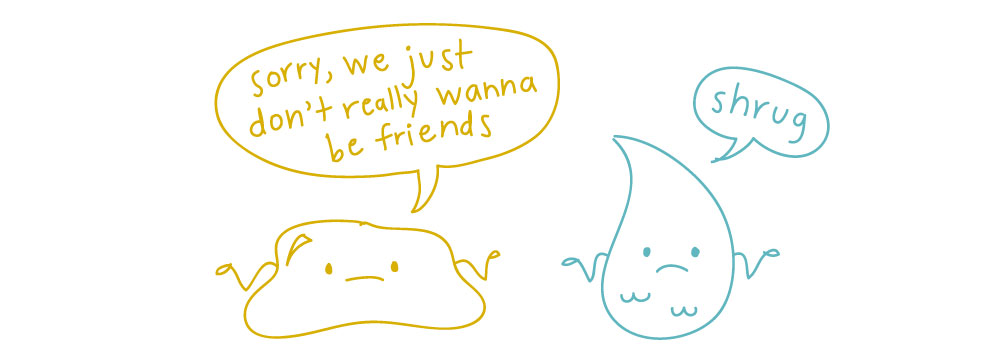
But if you add some dish soap to your oil-and-water mixture and mix it up again, you’ll see a very different result. The water-loving end of the soap grabs onto the water. The water-fearing end of the soap grabs onto the oil. With the soap holding onto both, the oil gets broken up and mixed into the water (for a while, anyway).
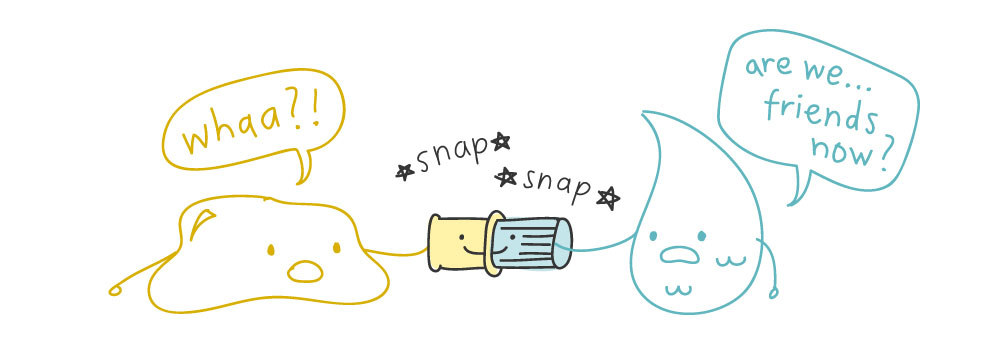
The novel coronavirus has an outer layer of oily molecules, so it acts like a tiny blob of oil. It’s water-fearing, so plain old water won’t grab onto it. That’s why washing your hands in just water won’t do the job; the oily virus and the water push each other apart, just like oil and water separating into layers.
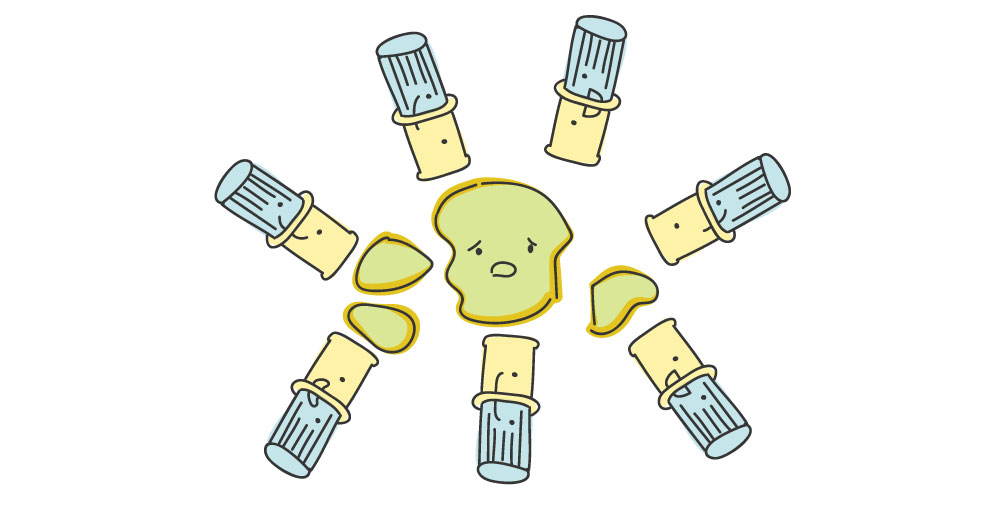
But add some soap, and the water-fearing end of the soap molecules grab onto the coronavirus and won’t let go. In fact, the soap molecules grab so hard that they actually pull the outer layer of the virus apart! Each of the broken virus chunks is then surrounded by soap molecules, clumped together to make a tiny bubble with the water-fearing ends in the middle. Trapped inside their soapy prisons, the chunks get safely washed down the drain. No more virus!
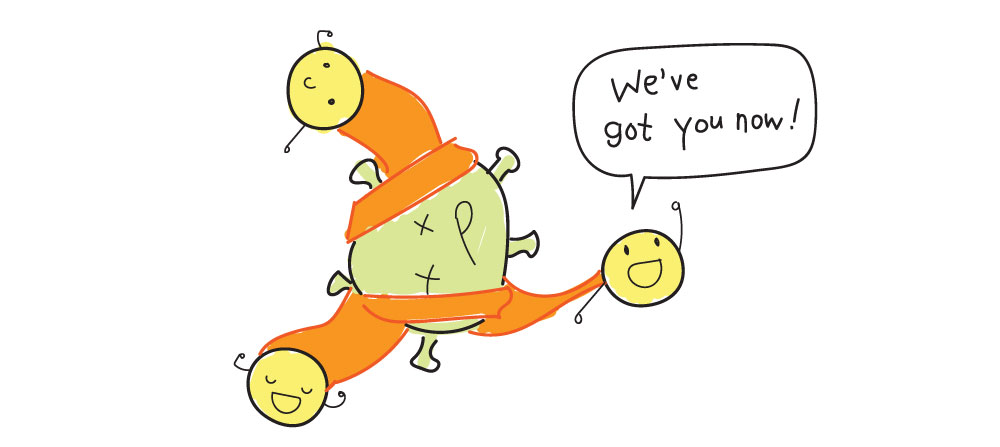
The catch is that this virus-busting chemistry takes a little bit of time, which is why you’ve probably been told that you should wash your hands for twenty seconds, or about as long it takes to sing “Happy Birthday” twice. Of course, “Happy Birthday” can get boring after a while, so now that you’ve learned the science of handwashing, you can give this variation a try.
Happy birthday to you,
happy birthday to you,
Soap breaks up the virus,
and grabs oil too.
Happy birthday to you,
happy birthday to you,
Rinse dirt off your fingers,
and the virus goes too!
Further reading for parents
- The Science of Soap — The Guardian
- Why Soap Works — The New York Times
- When and How to Wash Your Hands — Centers for Disease Control and Prevention